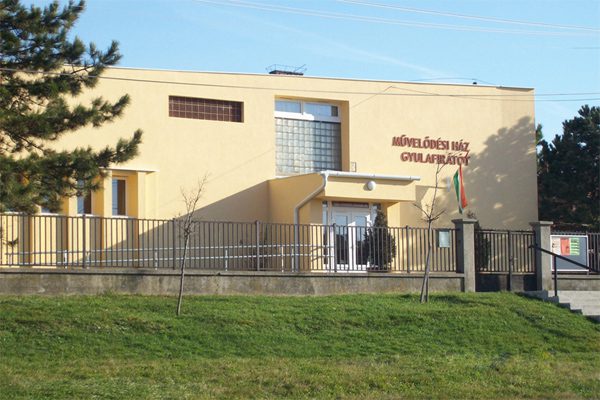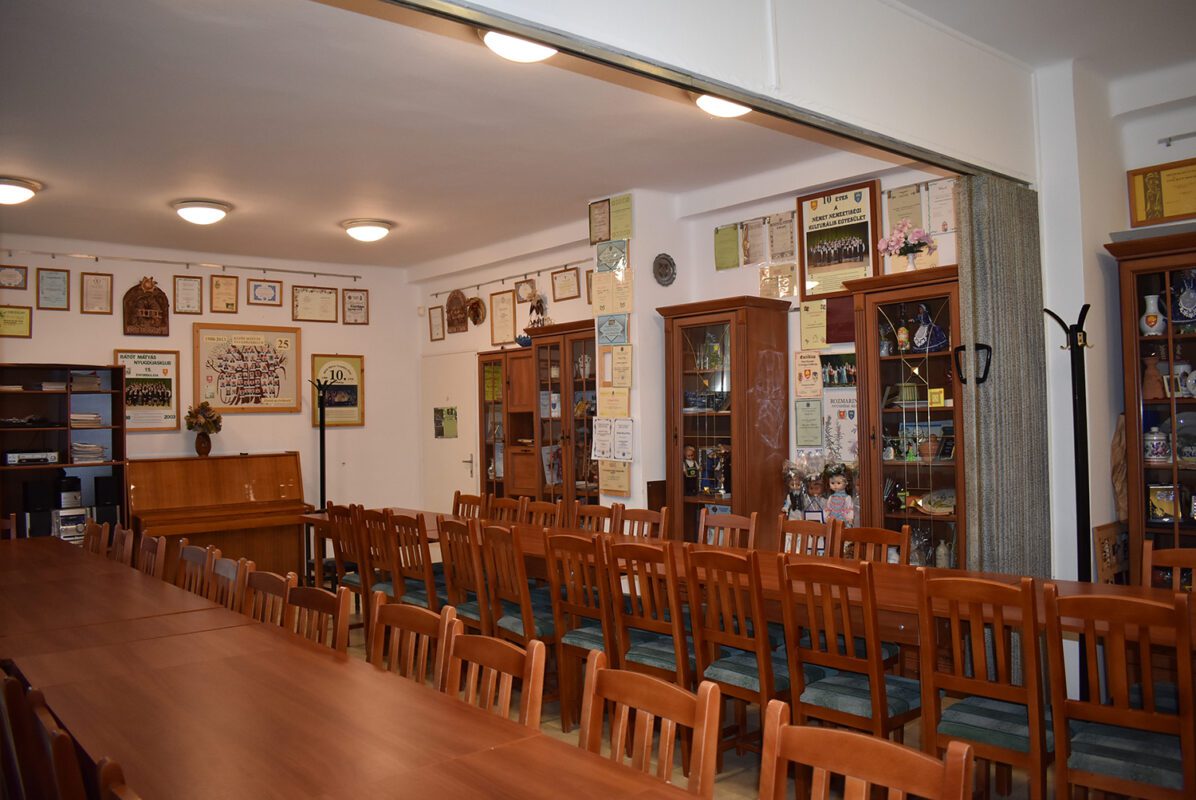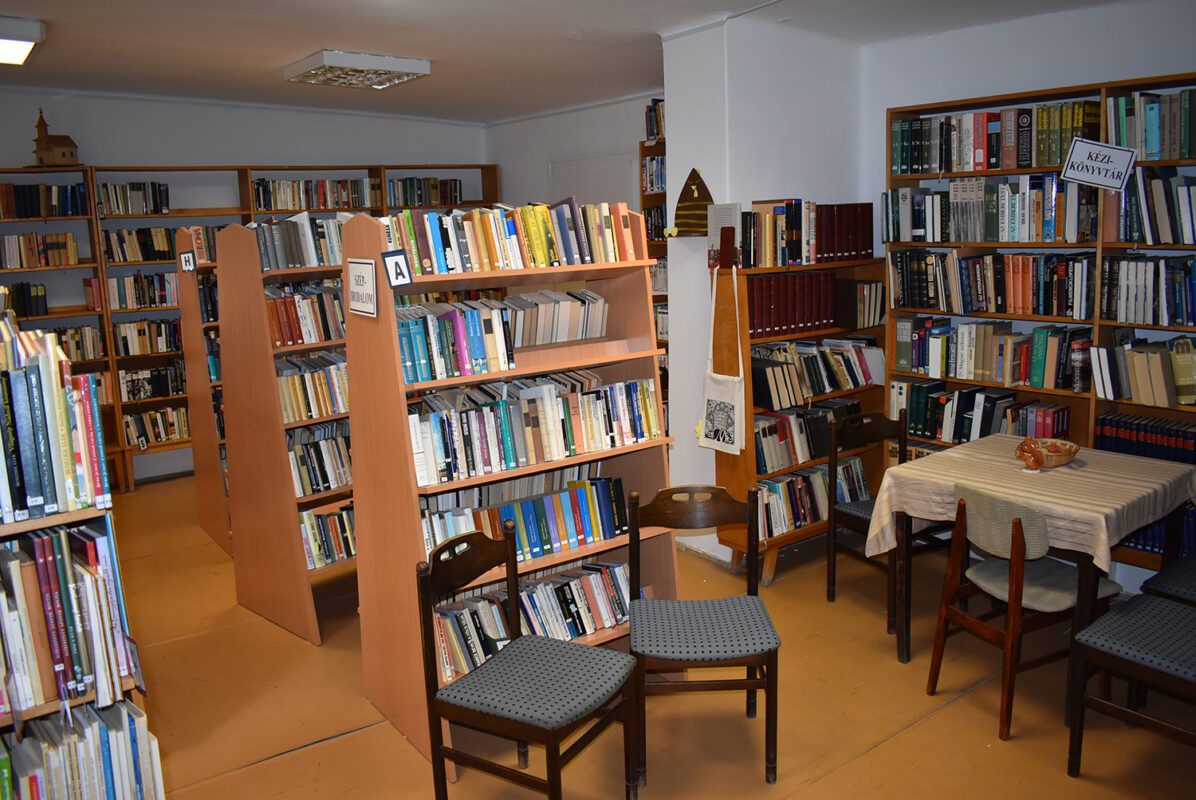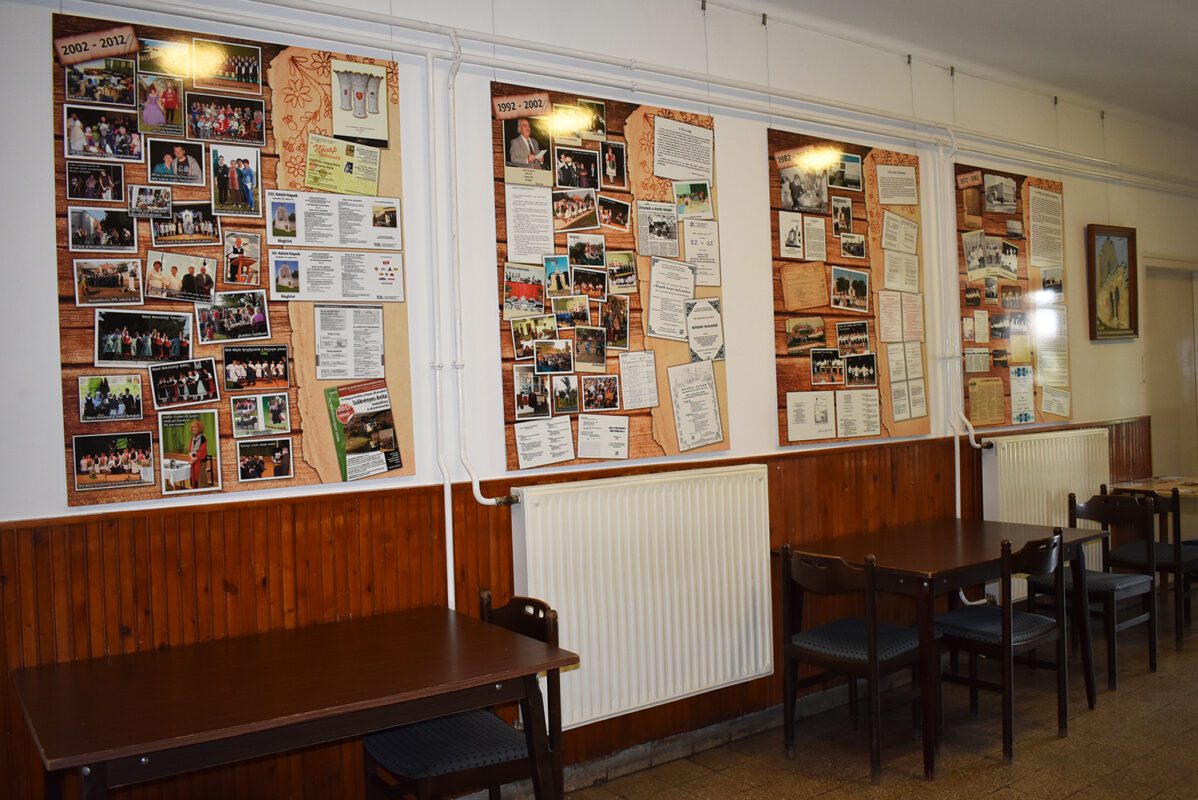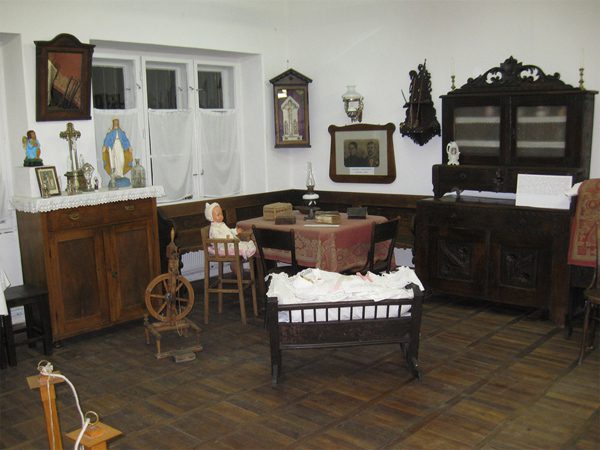Gyulafirátót Cultural House
Mobile: +3670 368-8211
Telephone: +36 88 457 795 (answering machine)
E-mail: gyulafiratot@agoraveszprem.hu
Our cultural centre aims to meet the cultural and entertainment needs of the population of Gyulafirátó, which is home to nearly 4,000 people. Despite its annexation to the town, the settlement has preserved its rural character and traditions. Our institution considers it a very important task to preserve traditions and pass on folk culture to the younger generation.
To this end, our amateur folk art groups are active:
- The Bakonyerdő Pávakör
- The Rátót Mátyás Pensioners' Club Traditional Preservation Group
- The Rozmaring Pensioners Club
- The Tikhegyi Pearl Chicks Dance Group
- The Tikhegyi Pearl Doves Dance Group
Our institution is also home to the following NGOs:
- The Thorn Rose Foundation
- Tikhegyi Friends of the Mountain Association
- Gyulafirátótti Citizen Guard Association (Pásztor u. 26.)
- Gyulafirátótért Public Benefit Association
- Gyulafirátót German Nationality Cultural Association
- Arts groups: National German Choir, German Nationality Dance Group
Many times a year we organise traditional events, neighbourhoods and meetings together.
Programme
Every year we organise several folk music and folk song meetings, where traditional ensembles from the region and further afield have the opportunity to perform. Our main past and present traditional events are.
Our programmes include literary poetry and music, meetings between writers and readers, library courses, reading programmes, exhibitions (mainly of amateur artists: paintings, photos, handicrafts, etc.), performances on a variety of themes, play-house, craft activities, children's theatre, show nights, retro parties, pop-rock stage.
Commemorative events for our national holidays are also organised by our House of Culture in cooperation with local institutions.
Among our summer events, we would like to highlight the Rátóti Days programme, which, in addition to traditional events and exhibitions, includes children's programmes, modern entertainment, various genres of shows, sports programmes, concerts of popular music, fireworks and a street ball. It is thus a very popular and well-attended event not only in the municipality but also in the region.
In the middle of September in previous years, visitors could mingle in the colourful and noisy atmosphere of the traditional harvest parade, with white buffalo, outlaws, Hungarian hussars, the little judge, Hungarian girls and Hungarian boys carrying the grape crown, after the judge and the judge's wife on their carriages, the people took their seats in the "siserehad", touring the streets of the village, to throw out the news of the "tikhegyi" and invite the people to the harvest ball.
Nowadays, the above event is more of a theatrical version of the Harvest Festival, with traditional events where visitors can always taste the locally pressed must, adults can taste the delicious "tikhegy" juice, and there are entertaining folklore shows and a variety of folk games for children and adults alike.
In addition to the public cultural work in the institutional part, our institution and local NGOs jointly maintain the Hadnagy László Local History Collection at Pásztor u. 26. The legacy of László Hadnagy, a native of our village, teacher, museologist, local historian, locally collected objects, a permanent exhibition consisting of two rooms.
If you wish to visit a group, please contact the manager of the cultural centre in advance.
A brief history of the library
The library, formerly a municipal library, was opened in 1972 in the Cultural Centre and was owned by the Eötvös Károly County Library and managed by the Library Association (Supply System) until 2009.On 15 December 2009, the County Library transferred the nearly 8,000-volume collection to the Municipal Cultural Centre and Library free of charge.
Thanks to the successful TIOP 1.2.3/08/2-2008-0089 grant, the library's computer equipment was upgraded and the SZIKLA integrated library management system was used to start the computerisation of the library's growing collection of more than 8,000 volumes.
Thanks to the grant, 1 internet computer is now available to library users and, with the right equipment, can also be used by people with mild hearing impairment.
The library's use and services policy is available in the library.
On 1 January 2013, the library was returned to the Eötvös Károly County Library.
Key facts about enrolment and using the library:
- Only registered readers can borrow
- Registration is free
- When registering, library users must provide the following information: name, date and place of birth, address
- We also ask the parent who is sponsoring the children up to the age of 14 to provide the above information
- Deadline for borrowing books: 30 days
- 10 books at a time for readers over 14, 5 documents for readers under 14
- Internet is free of charge during library hours for 1 person for a maximum of 30 minutes
- A late fee will be charged if you do not return the borrowed book by the deadline.
- You will be reimbursed if the borrowed book is lost or damaged: the actual price for documents less than 2 years old, the purchase price for older documents
The following newspapers and magazines can be read locally:
Diary, Gardening-Grape growing, Practicals, Nők Lapja
The settlement in the past and today
Gyulafirátót is an Árpád settlement in the neighbourhood of Veszprém. South-west of Veszprém, "Pogánytelek" was the ancestor of our village, a Roman settlement of major importance, the foundations of which were uncovered by Gyula Rhé during excavations in l903-l904.
The village is named after the genus RÁTÓT. Rátót came to Hungary during the reign of King Kálmán Könyves and was given this place by the king (in l096), which became the ancient nest of the Rátót tribe, who built his castle on the present-day Kálvária hill. Many prominent figures of the Rhaeto-Rhaeto clan are known.
The founder of the Rátóti Premonastic Monastery, Archbishop Mátyás Rátót of Esztergom died in 1241 in the Battle of Muh. (The remains of the monastery are known as the stork's nest.)
The other namesake of our village: the GYULAFFY family of Rátót-nembel, which kept the present Gyulafirátót until the time of King Matthias, and then moved to Csobánc castle.
From 1420 our municipality has been a GYULAFIRÁTÓT!
The castle was built in l778 by Károly Szilcz, the Prépost. Only the last provost, Károly Szentiványi Szentiványi, lived in the castle from the time of his appointment until his death in 1947, when the 700-year-old provostry ceased to exist.
Until the middle of the 20th century, the population's livelihood was based on agriculture, livestock breeding and forestry. Today, part of the population works in Veszprém. Many people in Gyulafirátó make their living from business.
The village has had a school since the 18th century. The modern school, which took the name of László Gyulaffy, a warrior from the end of the war, was completed in 1992. The school introduced German national education, which gives the opportunity to learn the German language, the way of life, culture and traditions of the German nationality. The Germans came to Gyulafiratót during the settlement of the 1700s. In l890, 698 of the 1490 inhabitants declared themselves to be of German nationality. In l853, the Germans requested and received German instruction and mass from the Veszprém County authorities. At the beginning of the century, there were still significant German-speaking families living in Gyulafirátót. German culture and language have local roots.
Until the 1950s, the Schmid and Karli families had a very good brass band, and the Gunther family had an accordion and cimbalom band. The Klem tavern was a place of entertainment for the Germans. The former Germanness of the population is preserved in names, customs, gastronomy and photographs. The old German Street still bears his name. The Christmas "Christkindl" is still a tradition in the village.
Gyulafirátót was annexed to Veszprém in January l984, but it still retains its rural character and traditions. Since the 1990s, with the construction of new housing estates, the population has increased significantly. A number of civil organisations have been set up, which, together with the House of Culture, act as a cohesive force for the community, preserving Gyulafirátót's cultural traditions and local values, and beautifying the village.
Historic monument: 13th century Premontrian monastery, which follows the Cistercian model (Kolostor u.)
A listed building: Priepiscopal Castle (Castle u.)
Monuments:
- World War I-II memorial, in the square in front of the castle,
- The bust of László Gyulaffy, the valiant soldier of the end of the war, in the courtyard of the school (Vízi u.)
- Relief of Mátyás Rátót on the bastion wall of the Roman Catholic Church (Kálvária u.)
- The bust of Lajos Batthyány, next to the community centre (Hajmáskéri u.)
Place of remembrance: the Calvary hill. It was built in l808 with public donations and renovated in l996. A copy can be seen in Szentendre in the Skanzen.
László Hadnagy Local History Collection: László Hadnagy, a native of our village, teacher, museum director, exhibition of his legacy and local collection (Pásztor u. 26.)

